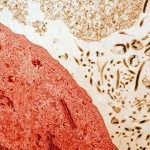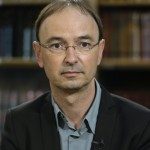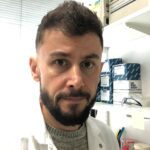Link to Pubmed [PMID] – 15367618
J. Virol. 2004 Oct;78(19):10516-24
Lassa virus (LV) and Mopeia virus (MV) are closely related members of the Arenavirus genus, sharing 75% amino acid sequence identity. However, LV causes hemorrhagic fever in humans and nonhuman primates, whereas MV cannot induce disease. We have previously shown that antigen-presenting cells (APC)-macrophages (MP) and dendritic cells (DC)-sustain high replication rates of LV but are not activated, suggesting that they play a role in the immunosuppression observed in severe cases of Lassa fever. Here, we infected human APC with MV and analyzed the cellular responses induced. MV infection was productive in MP and even more so in DC. Apoptosis was not induced in either cell type. Moreover, unlike DC, MP were early and strongly activated in response to MV, as shown by the increased surface expression of CD86, CD80, CD54, CD40, and HLA-abc and by the production of mRNA encoding alpha interferon (IFN-alpha), IFN-beta, tumor necrosis factor alpha and interleukin-6. In addition, MV-infected MP produced less of the virus than DC, which was related to the fact that these cells secreted IFN-alpha. Thus, the strong activation of MP is probably a major event in the control of MV infection and may be involved in the induction of an adaptive immune response in infected hosts. These results may explain the difference in pathogenicity between LV and MV.


